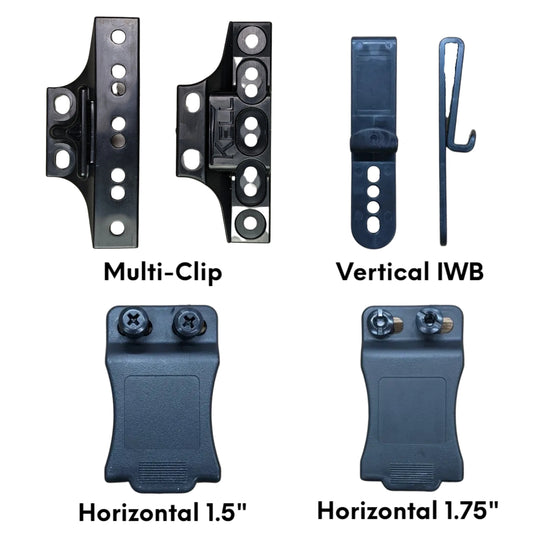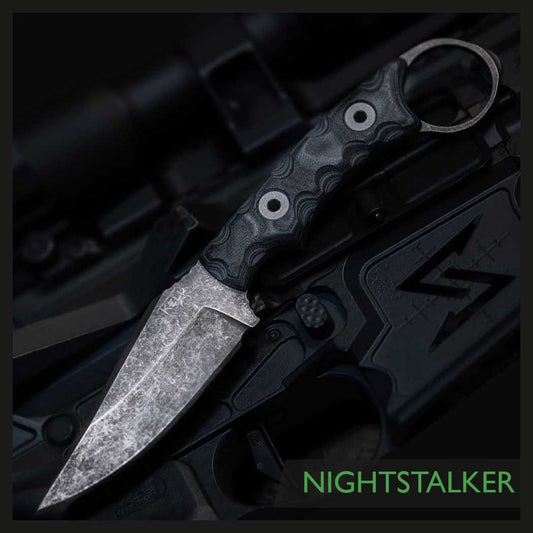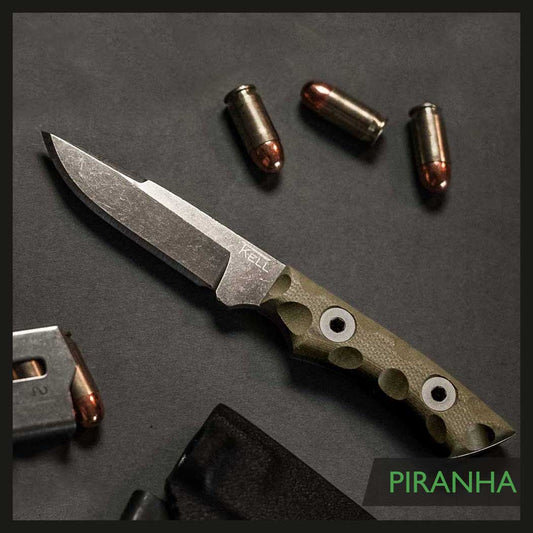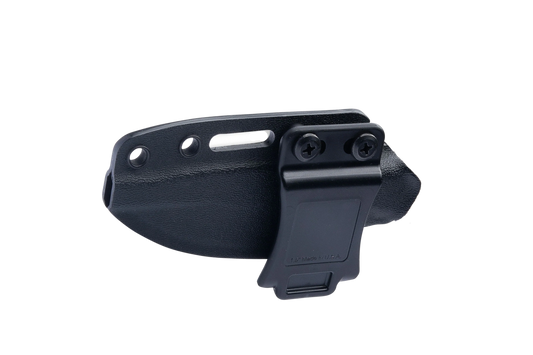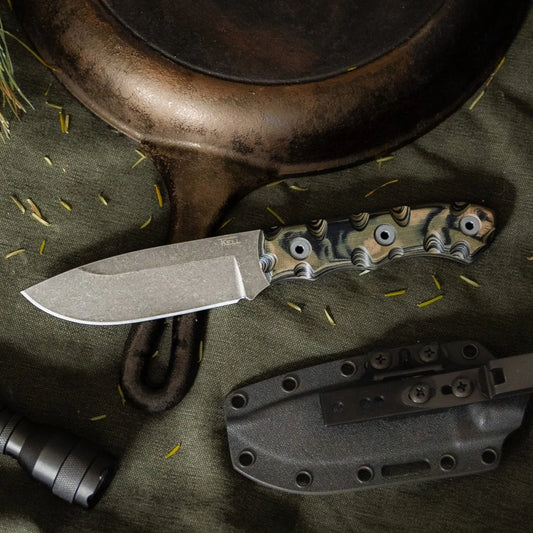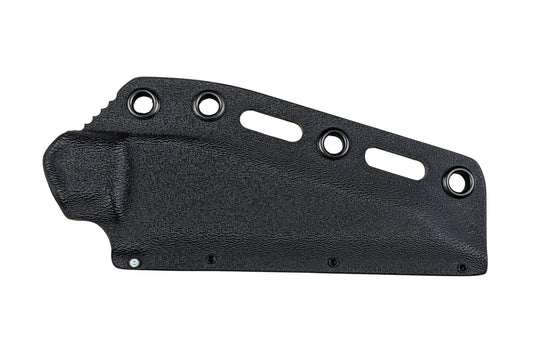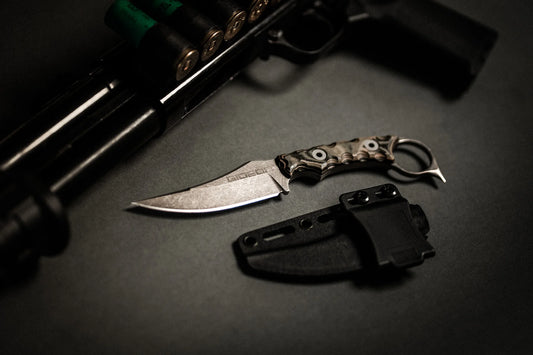Introduction to Tactical Knives
In the vast world of cutlery and knives, tactical knives hold a special place. Originally designed for military use and law enforcement agencies, these knives are now popular among outdoor enthusiasts, survivalists, and for personal protection. By definition, a tactical knife is a knife designed for maximum efficiency in combat situations. However, it's usage has evolved over the years, going beyond the battlefield and finding its place in everyday carry gears.The history of tactical knives dates back to the time when humans first began using tools. With time, these tools grew more refined and specialized, resulting in the modern tactical knife. These knives, with their sturdy construction and high-quality materials, are designed for durability, reliability, and efficiency in challenging situations. As such, understanding how to use such a knife properly is of utmost importance. It doesn't just boost your survival skills but also ensures safety while handling the knife.
Types of Tactical Knives
Before you start using a tactical knife, it's crucial to understand the different types available on the market. Knowledge about diverse tactical knife types will help you make an informed decision when selecting a knife that suits your specific needs. The most common forms of tactical knives include the fixed blade knife, folding knife, pocket knife, and boot knife. Each of these knives has unique characteristics and uses, making them more suited to specific tasks.Picking the right tactical knife depends on several key features. These include the blade type, handle material, size, weight, and the knife’s intended use. For instance, if you need a sturdy knife that can handle heavy-duty tasks, you may opt for a fixed blade knife. On the other hand, if portability is what you're after, folding knives or pocket knives might be your best bet. As different tactical knife types serve different purposes, understanding these features will help you choose the most suitable one.
Safety Measures in Handling Tactical Knives
Safety should be your top priority when handling tactical knives. Considering the sharpness and potency of these knives, even a minor slip or misuse can lead to serious injury. Therefore, before you start practising knife techniques, ensure you're aware of the basic safety measures. These include keeping your fingers away from the blade's path, cutting away from your body, and never using the knife when you're distracted or in a hurry. Remember, a tactical knife is not a toy, and it should be treated with the seriousness it deserves.When it comes to storing tactical knives, proper care should be taken to ensure they don't cause accidental injuries. Knives should be stored securely in sheaths or knife blocks when not in use. Furthermore, they should always be placed out of reach, particularly from children. It's also recommended to carry the knife with its blade folded or covered to avoid unintentional harm. These correct handling and storage methods are the first steps to preventing accidents and maintaining the longevity of your tactical knife.
Basic Techniques in Using a Tactical Knife
Getting the hang of the basic techniques is the stepping stone to mastering the use of a tactical knife. To start with, you should learn the correct way of holding a tactical knife. The most common grip is the 'hammer grip,' where your thumb rests on the spine of the knife's blade. This grip provides excellent control over the knife and allows you to perform tasks with precision. Another commonly used grip is the 'reverse grip,' which is typically used for defensive purposes.The basic techniques in using a tactical knife include cutting and thrusting. Cutting involves dragging the edge of the blade across the target. On the other hand, thrusting refers to driving the knife into the target usually with a forward motion. Moreover, there are several tactical stances that you can take when using a knife, such as the high guard, mid guard, and low guard, each providing different levels of defense and attack. These stances give you the ability to respond swiftly and effectively in combat situations.
Advanced Tactical Knife Usage
Once you are comfortable with the basic knife techniques, it's time to proceed to the more advanced moves. These maneuvers go beyond simply cutting or thrusting and are usually designed for self-defense. For instance, the 'slash and thrust' method involves delivering a swift cut followed by a powerful thrust. Another advanced technique is the 'double-edged strike,' which utilizes both edges of the knife for a simultaneous attack and defense. Always remember, these complex moves require practice and proficiency in basic techniques.Further, understanding how to apply these techniques in real-world scenarios is crucial. Each situation demands a specific plan of action. For instance, tactical knife use in a wilderness survival scenario will be drastically different from its use in urban self-defense. So, one should be versatile and adaptive to employ their tactical knife skills effectively under different circumstances.
Maintenance and Care for Tactical Knives
A well-maintained tactical knife is a reliable tool that can serve you for years. Regular cleaning is vital to prevent rusting and maintain the sharpness of the knife. Certain substances like sap and salt can cause corrosion, so make sure to clean your knife after every use. In terms of sharpening, you can use a sharpening stone or sharpening rod to keep your knife's blade in prime condition.
Proper storage is equally important for the longevity of your tactical knife. Keep it in a sheath when not in use to protect its blade from damage and prevent accidental injuries. Periodic oiling is also recommended to keep the blade smooth and rust-free. The handle should be cared for as well, with cleaning and oiling as needed to preserve its grip and overall quality.
It is important to apply a light oil coating to prevent rust. Especially after exposing carbon steel to water. Not so important for stainless. Mineral oil is recommended if you want a food safe option, and any gun oil if not. Oil is also necessary for the maintenance of your TKell Knives G10 grips. The G10 grips will get dry and chalky after cleaning and will need to be oiled. Typically the oils on your hands keep the G10s looking good but, if stored or if you’ve cleaned them, they’ll need a touch up. Other than that, they are good to go.
Legal Implications of Carrying a Tactical Knife
Understanding the legal aspects of carrying a tactical knife is as important as knowing how to use it. Laws regarding the possession and carry of knives vary greatly from one jurisdiction to another. While some places have few restrictions, others might have stringent rules about knife length, type, and the way it is carried. Hence, it's essential to be aware of the local laws before carrying a tactical knife.In terms of its use in self-defense, the law generally allows the use of a knife if there's a legitimate threat to your life or safety. However, the use of force should be proportional to the threat level, and unnecessary violence can lead to legal penalties. It's always advised to use a tactical knife responsibly and within the confines of the law.
Conclusion
To conclude, using a tactical knife is much more than just wielding a blade. It involves choosing the right knife, understanding its functions, learning to handle it safely and effectively, maintaining it, and being aware of the legal implications. This comprehensive guide has been designed to help you navigate the world of tactical knives, from their history and types to advanced knife techniques. With regular practice and adherence to safety standards, you can become proficient in tactical knife usage.Remember that mastering a tactical knife is a continuous process that requires dedication, patience, and respect for the tool. Whether you are a novice or a seasoned user, let this guide serve as your resource in your journey with the tactical knife. Safe and responsible use of this versatile tool not only enhances your survival skills but also contributes to your personal growth and development.

